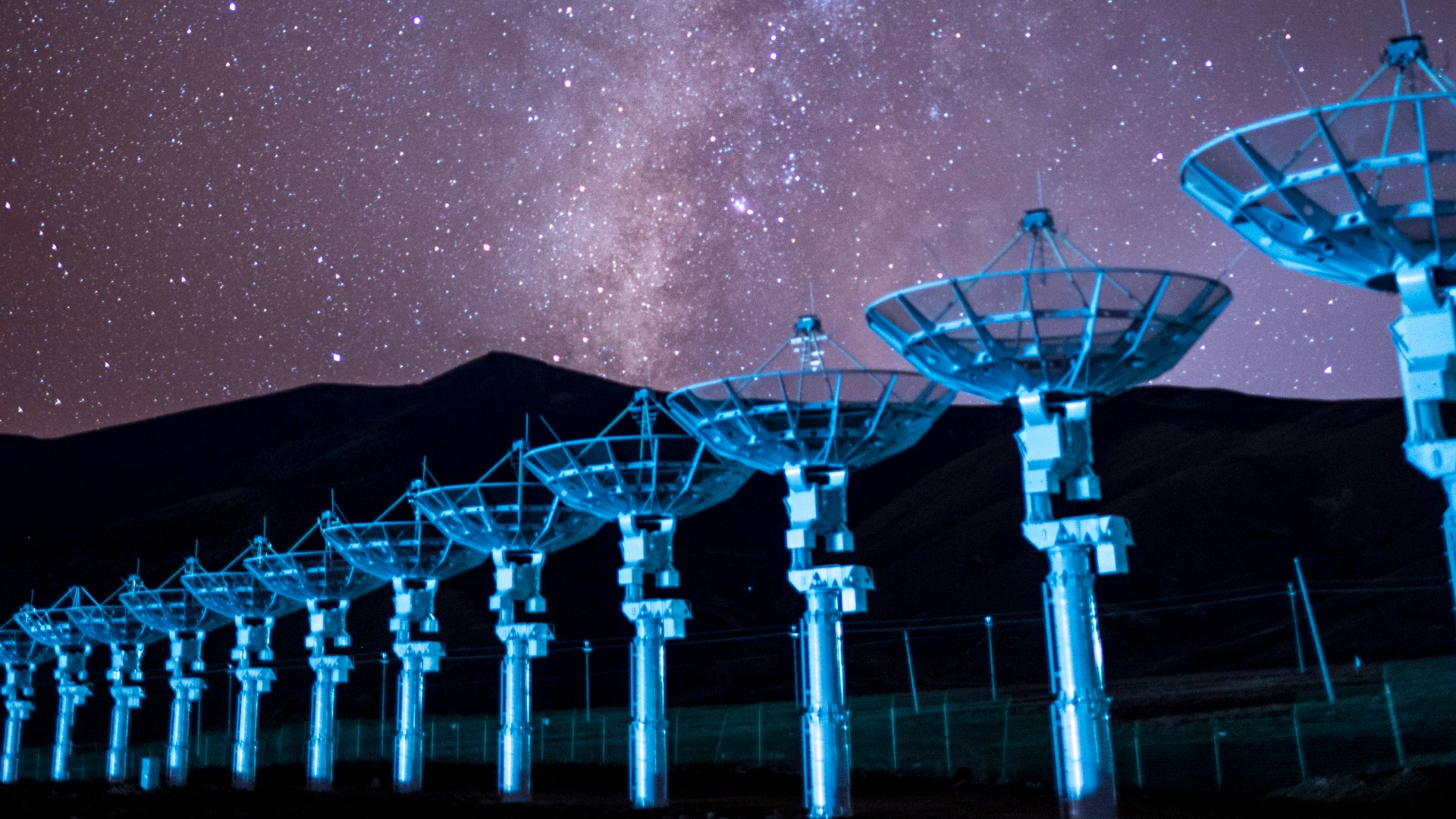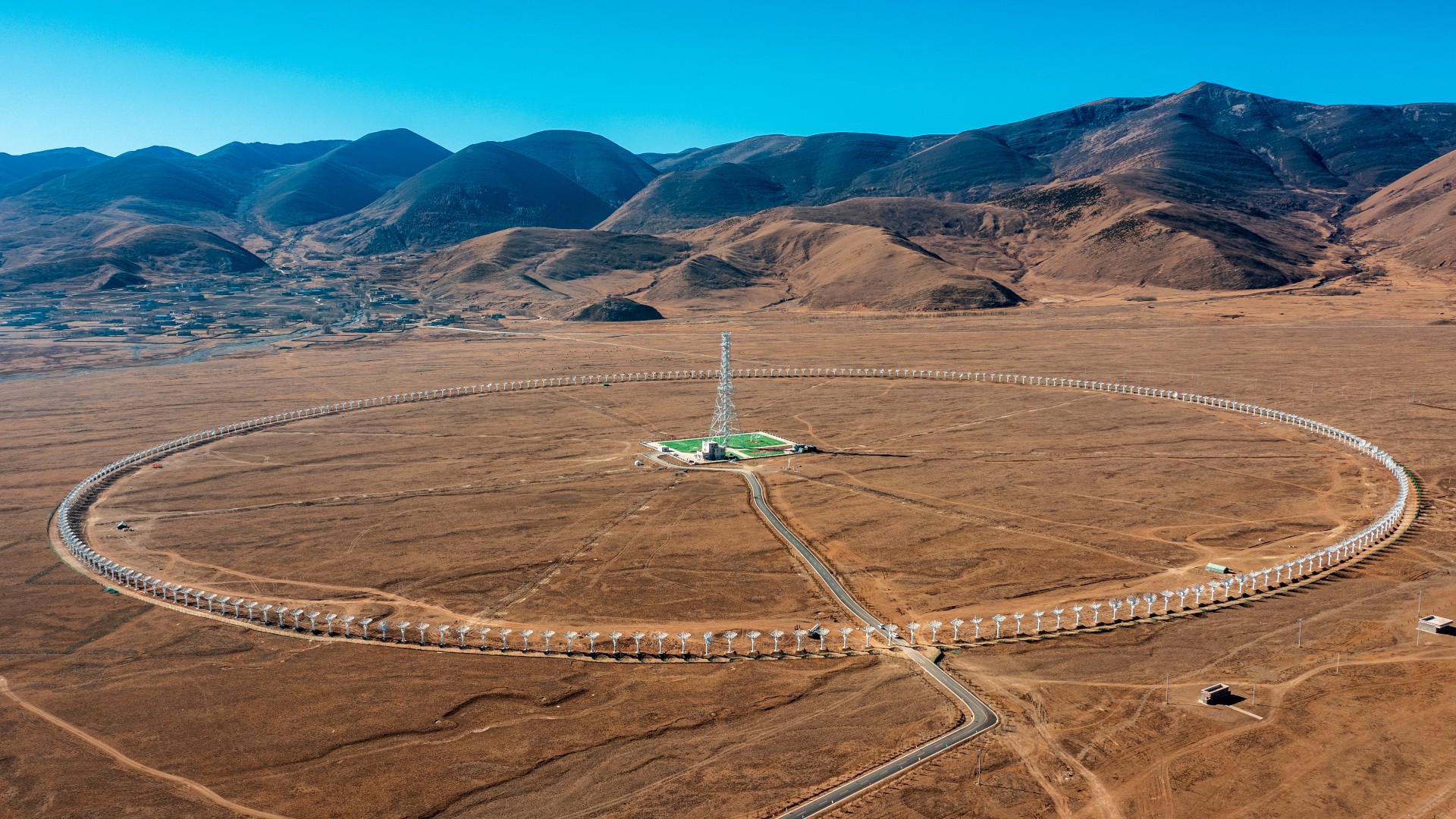China completes world's largest solar telescope array with a whopping 313 dishes
The 1.95-mile-wide (3.14 kilometer) ring of dishes will study solar storms.

China has completed the construction of what is now the world's largest array of telescopes dedicated to studying the sun and how its behavior affects the Earth.
The Daocheng Solar Radio Telescope (DSRT), located on a plateau in Sichuan province in southwest China, consists of 313 dishes, each with a diameter of 19.7 feet (6 meters), forming a circle with a circumference of 1.95 miles (3.14 kilometers).
DSRT is focused on observing solar flares and coronal mass ejections (CMEs) which can interfere with or overload electronics and wreak havoc on and above Earth. CMEs are triggered by realignments in the star's magnetic field that occur in sunspots, and when directed at Earth, can threaten power grids, telecommunications, orbiting satellites and even put the safety of astronauts aboard the International Space Station and China's newly-completed Tiangong space station at risk.
Related: China is building a huge ring of telescopes to study eruptions on the sun
"We can forecast whether a solar storm bursts toward the Earth," Wu Lin, deputy chief designer, Ring Array Solar Radio Imaging Telescope Project, told CCTV+. "If it bursts toward the Earth and will reach us, we will be able to issue early warning to such a solar storm. In this way, we can provide space environment forecasts for normal operation of satellites in space and power grids on ground."
On the brighter side, solar flares and CMEs are also responsible for the colorful aurora phenomena that can be seen in the night sky near polar regions.
The colossal array will start pilot operation in June 2023, upon completion of alignment and joint-test. It is just one of a number of new solar observation projects that are underway worldwide.
Breaking space news, the latest updates on rocket launches, skywatching events and more!
"We are entering the golden age of solar astronomy as we have lots of major solar telescopes coming online," Maria Kazachenko, a solar physicist at the University of Colorado, Boulder, told Nature.
Having observatories in China will also provide important data on solar activities that are not visible to telescopes in other time zones, Ding Mingde, a solar physicist at Nanjing University, added, stressing the importance of global cooperation in this realm.
DSRT is part of a ground-based space environment monitoring network called the Chinese Meridian Project (Phase II).
Follow us on Twitter @Spacedotcom or on Facebook.

Andrew is a freelance space journalist with a focus on reporting on China's rapidly growing space sector. He began writing for Space.com in 2019 and writes for SpaceNews, IEEE Spectrum, National Geographic, Sky & Telescope, New Scientist and others. Andrew first caught the space bug when, as a youngster, he saw Voyager images of other worlds in our solar system for the first time. Away from space, Andrew enjoys trail running in the forests of Finland. You can follow him on Twitter @AJ_FI.

